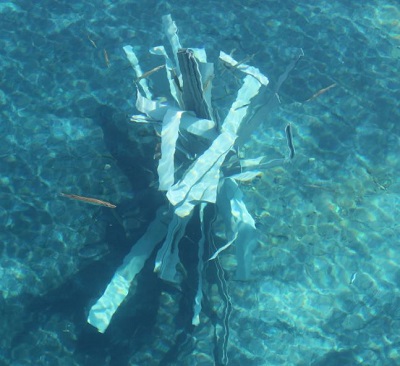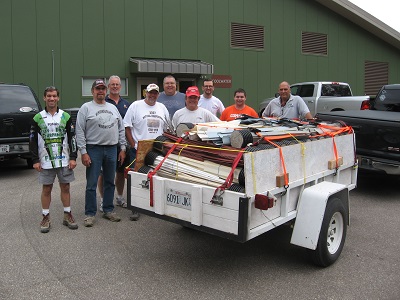Wild Rose Hatchery habitat study underway with 10,000 five inch spotted Musky fingerlings
Posted by David Ewald on 22nd Oct 2014
An exciting follow up to the first of two stories written about our habitat study in Wisconsin at Wild Rose State Hatchery. The first article explained the entire project in which hundreds of Fishiding habitat units were delivered and installed to grow "smarter"musky.
As the second follow up article states, the project was delayed due to the fish testing positive for Piscirickettsia-like organisms, or something called P.L.O disease in the Musky. The presence and importance of Piscirickettsia-like bacteria in mammals have been long recognized, but only in recent years could they be identified and characterized in aquatic animals. For this reason, it was not until the late 1980s that Rickettsia agents were linked with major diseases in fish, and subsequently attributed as the cause of substantial economic losses due to disease-related mortality in the 1990s. Piscirickettsiosis and piscirickettsiosis-like diseases have affected aquaculture productivity, profitability, species compatibility with commercial rearing, and fish transport.
Musky with the disease were first discovered in Lake St. Clair in the early 2000’s. It can appear as red spots or blotches on the fish. The WDNR asked them to hold onto the fish for further testing, which showed no definitive results of where or how they were infected. Although the fish appeared healthy, robust and happy, the Wisconsin officials regrettably had to decline the importation. A sincere feeling of disappointment spread through the various department offices, as the realization of waiting another year to begin the study solidified.
The great news is that the fish have been delivered and have been swimming happy for over a month now. Two ponds with habitat and two without for control comparison. We can hardly wait for the results to begin to come in. Weights, lengths and general health will be studied before release. The pit tags will keep track after that, helping us understand the survivalbility of the habitat raised fish vs. bare pond and the growth rates of each. Here's the WDNR recent press release about the project.




